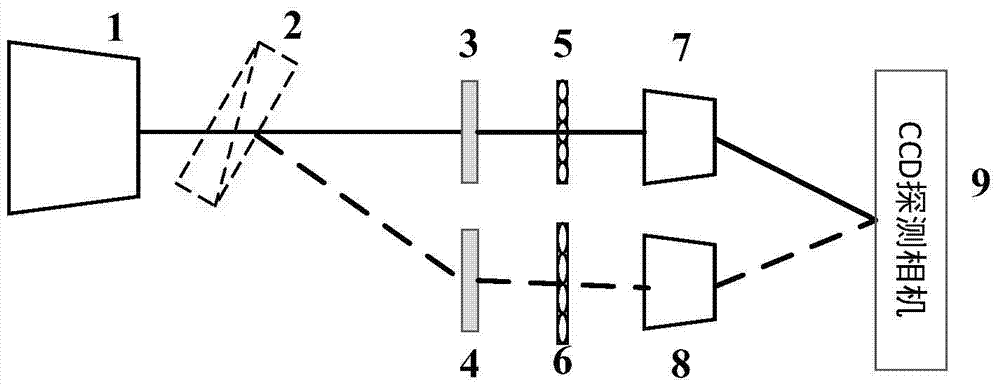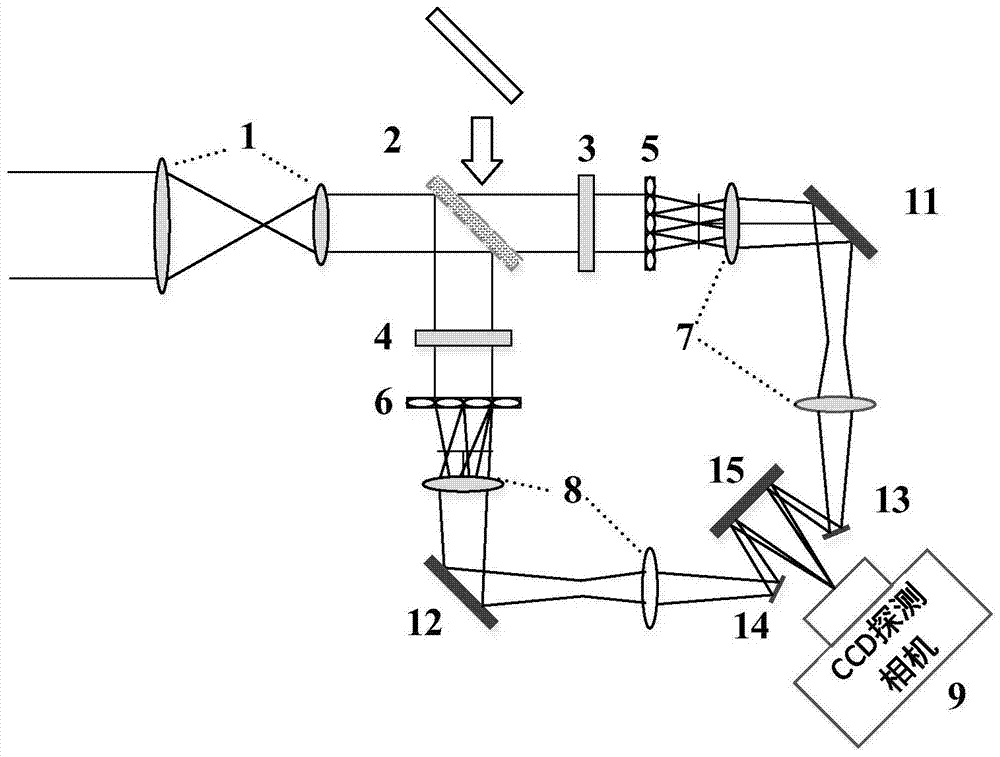A Composite Shaker-Hartmann Wavefront Sensor
A sensor and composite technology, applied in the field of adaptive optics, can solve the problems of low signal-to-noise ratio of detection array images, low signal-to-noise ratio of array images, insufficient spatial resolution, etc., and achieve compact and simple structure, accurate wavefront measurement, The effect of ensuring accuracy
- Summary
- Abstract
- Description
- Claims
- Application Information
AI Technical Summary
Problems solved by technology
Method used
Image
Examples
Embodiment Construction
[0015] The present invention will be further described below in conjunction with the accompanying drawings and specific embodiments.
[0016] Such as figure 1 As shown, the present invention includes a first matching system 1, a mirror 2, a first light adjuster 3, a second light adjuster 4, a first microlens array 5, a second microlens array 6, a second matching system 7, A third matching system 8 and a CCD detection camera 9 . After the incident light passes through the first matching system 1, it enters the first light adjuster 3 and the first microlens array 5, and is imaged on the CCD detection camera 9 through the second matching system 7. When the signal-to-noise ratio of the detection target is low, it passes through The cut-in mirror 2 guides the light into the second light adjuster 4 and the second microlens array 6 , and is imaged on the CCD detection camera 9 through the third matching system 8 .
[0017] The first matching system 1 is mainly used to match the inc...
PUM
 Login to View More
Login to View More Abstract
Description
Claims
Application Information
 Login to View More
Login to View More - R&D
- Intellectual Property
- Life Sciences
- Materials
- Tech Scout
- Unparalleled Data Quality
- Higher Quality Content
- 60% Fewer Hallucinations
Browse by: Latest US Patents, China's latest patents, Technical Efficacy Thesaurus, Application Domain, Technology Topic, Popular Technical Reports.
© 2025 PatSnap. All rights reserved.Legal|Privacy policy|Modern Slavery Act Transparency Statement|Sitemap|About US| Contact US: help@patsnap.com


